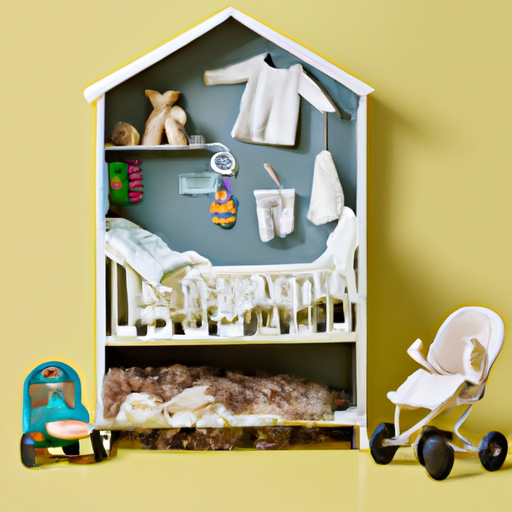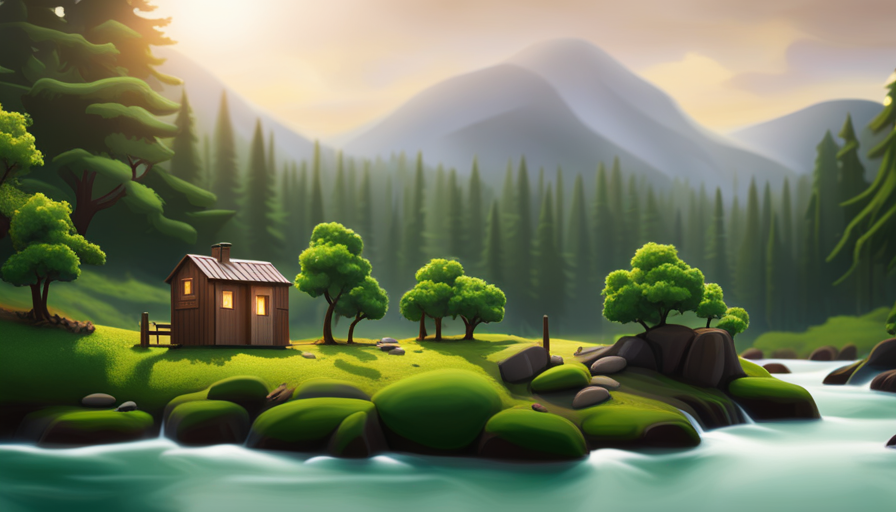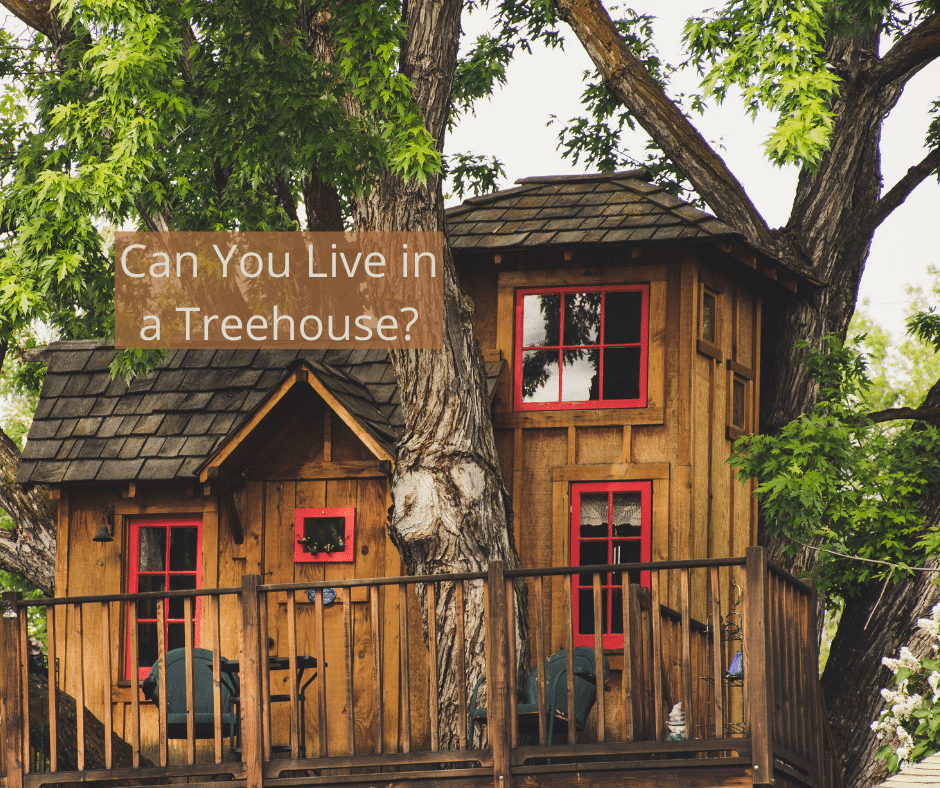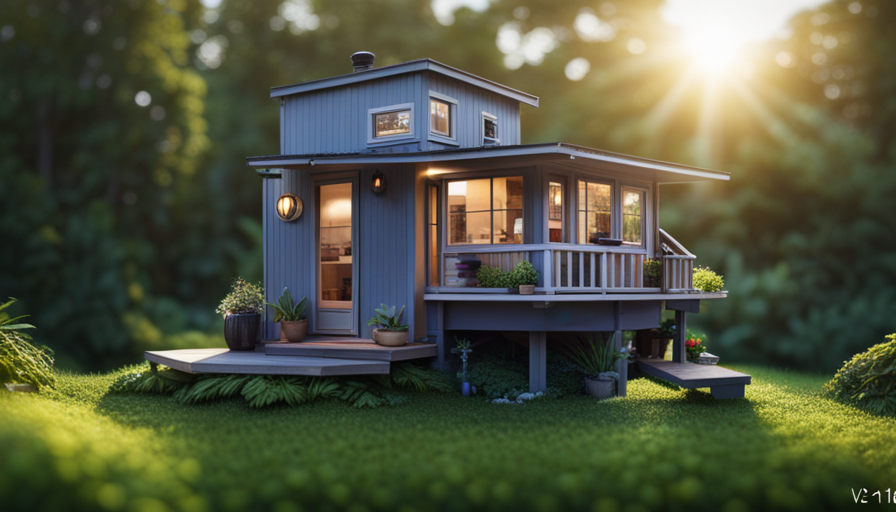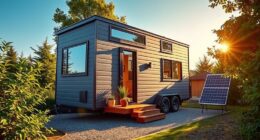In the past few years, the trend of living in tiny homes has been gaining popularity, with many people choosing to downsize their living spaces in favor of a more minimalistic lifestyle. However, for couples who are planning to start a family, the thought of raising a child in such a small space can be daunting.
In this article, we will explore the benefits of tiny home parenting and provide practical tips on how to prepare your living space for a new arrival.
While it may seem challenging to raise a baby in a small living space, there are many benefits to tiny home parenting. For one, living in a tiny home can help you adopt a minimalist mindset, which can be beneficial in many aspects of your life. Additionally, tiny homes can provide a sense of coziness and intimacy that larger homes may lack.
In this article, we will discuss how to maximize your space and utilize technology to make your tiny home work for your growing family, so you can enjoy all the benefits of tiny home living while raising a happy, healthy baby.
Key Takeaways
- Tiny homes can provide a cozy and comforting space for parent and baby, promoting spending time outdoors for physical and mental health benefits.
- Careful planning and organization, as well as creative storage solutions, are necessary for maximizing space and baby-proofing without cluttering the entire space.
- Technology, such as telehealth solutions and various apps and devices, can bridge the gap for individuals in rural areas and help track baby’s health and development.
- Adopting a minimalist mindset and considering the layout and functionality of the space can help manage belongings, teach the child the value of simplicity, and create a sense of coziness and intimacy in the tiny home.
Benefits of Tiny Home Parenting
The benefits of raising a baby in a tiny home include teaching a minimalistic lifestyle and appreciation for nature, providing a cozy and comforting space for both parent and baby, and promoting spending time outside, which can boost the immune system and reduce stress, as exemplified by the adage, ‘less is more.
Living in a tiny home with a baby requires careful planning and organization to ensure that the home remains clutter-free and functional. Adopting a minimalist mindset can help parents manage their belongings, while also teaching their child to appreciate the value of simplicity. Additionally, tiny homes often force families to spend more time outdoors, enjoying activities such as hiking, camping, and gardening, which can provide numerous physical and mental health benefits for both parent and child.
By living in a tiny home, parents can also create a cozy and comforting environment for their newborn. With limited space, parents can easily keep their baby close by, providing a sense of security and comfort. Furthermore, designating a specific ‘baby space’ can help parents baby-proof an area of the home without cluttering the entire space. Choosing an area close to the kitchen or bathroom can also make it easier for parents to monitor their baby’s needs.
Overall, raising a baby in a tiny home can provide numerous benefits, from promoting a minimalistic lifestyle and appreciation for nature to creating a cozy and comforting space for both parent and baby.
Preparing Your Space
Effective planning, organization, and adopting minimalist principles are essential in optimizing a limited space for a newborn. When preparing a tiny home for a new baby, it is important to consider the layout and functionality of the space.
One way to maximize space is through creative storage solutions, such as using wall-mounted shelves and utilizing under-bed storage. Another strategy is to designate specific areas for the baby, such as a corner of the living room or a separate room if space allows. This not only baby-proofs the area but also prevents clutter from spreading throughout the entire home.
Furthermore, it is important to choose an area close to the kitchen or bathroom for easy monitoring of the baby. This allows the new parent to quickly tend to the baby’s needs without having to navigate through a maze of furniture or clutter. Additionally, compact versions of baby items, such as a mini crib or foldable high chair, can help save space.
By adopting a minimalist mindset and strategically planning the layout of the tiny home, new parents can create a comfortable and functional space for their bundle of joy.
Utilize vertical space with wall-mounted shelves and hooks.
Use under-bed storage for baby items.
Designate specific areas for baby-related activities to prevent clutter from spreading throughout the entire home.
Utilizing Technology for Support
Utilizing technology can provide valuable support for individuals residing in rural areas who may have limited access to obstetricians or healthcare providers during pregnancy and after the baby is born. Telehealth solutions, such as virtual consultations with healthcare providers and remote monitoring of vital signs, can help bridge the gap and ensure that expecting parents receive the care and guidance they need. These solutions can also alleviate stress and offer peace of mind, knowing that medical professionals are accessible and available for consultation.
In addition to telehealth solutions, technology can also provide support for new parents in terms of tracking and monitoring their baby’s health and development. There are various apps and devices available that allow parents to track their baby’s feeding, sleeping, and diaper changes, as well as monitor their growth and development milestones. These tools can help parents stay organized and informed, providing a sense of control and confidence during the early stages of parenthood.
Frequently Asked Questions
How do you handle privacy concerns when living with a baby in a tiny home?
Privacy concerns when living with a baby in a small space can be a challenge, but there are solutions available.
Baby monitor solutions are a great way to keep an eye on your little one without having to be in the same room. Maximizing storage space can also help create designated areas for baby items, reducing clutter and creating a more private space for the parents.
It’s important to create a designated sleep area for the baby, such as a bassinet or crib, to ensure the baby’s safety while sleeping. Additionally, creating a schedule for privacy can help parents have some alone time or quiet time while the baby is napping or sleeping for the night.
With some planning and organization, privacy concerns can be addressed in a tiny home environment.
What are some creative solutions for creating a separate sleeping space for the baby in a tiny home?
Preparing a separate sleeping space for a baby in a small home can be a daunting task. However, with some creative solutions, it can be achieved without sacrificing too much living space.
One option is to invest in convertible furniture, such as a crib that can be transformed into a toddler bed as the baby grows.
Another alternative to co-sleeping is to utilize a bassinet or pack n’ play that can be easily stored during the day.
Additionally, designating a specific area for the baby to sleep can help create a sense of separation without taking up too much room.
While small living may present some challenges, there are various practical and empathetic solutions that can help new parents create a comfortable and safe sleeping space for their little one.
How can you ensure that your tiny home is safe for a baby?
Ensuring the safety of a baby in any living space is of utmost importance. Maximizing storage and organization is essential in a tiny home to prevent clutter and potential hazards.
Baby proofing essentials such as outlet covers, safety gates, and cabinet locks should be installed throughout the home. It is also important to designate a specific area as the baby’s space and to keep it clutter-free.
Additionally, choosing a location close to the kitchen or bathroom can make monitoring the baby easier. By taking these precautions, parents can create a safe and comfortable environment for their little one in a tiny home.
What are some tips for managing waste and diaper disposal in a tiny home?
When it comes to managing waste and diaper disposal in small living spaces, eco-friendly options and space-saving storage are key.
Cloth diapering is a popular and eco-friendly option that can reduce waste and save money in the long run.
Additionally, using a diaper pail with a tight seal and odor control can help keep the living space smelling fresh and clean.
To save space, consider using compact storage solutions such as hanging organizers or under-the-bed storage for diaper supplies.
It’s also important to have a designated changing area that is easily accessible and baby-proofed.
By utilizing these tips, managing waste and diaper disposal can be a seamless and sustainable process in a tiny home.
How can you incorporate play and learning spaces for a baby in a tiny home?
Maximizing space for baby activities can be achieved through compact versions of toys and furniture, as well as innovative storage solutions.
Designating a specific area for play and learning can also help reduce clutter and baby-proof the home.
Utilizing wall space for storage and incorporating multi-functional furniture can further optimize space.
It’s important to consider the developmental needs of the baby when choosing toys and activities, as well as ensuring that the space is safe and secure.
By incorporating play and storage solutions, parents can provide a nurturing environment for their baby in a tiny home.
I’m Theodore, and I love tiny houses. In fact, I’m the author of Tiny House 43, a book about tiny houses that are also tree houses. I think they’re magical places where imaginations can run wild and adventures are just waiting to happen.
While tree houses are often associated with childhood, they can be the perfect adult retreat. They offer a cozy space to relax and unwind, surrounded by nature. And since they’re typically built on stilts or raised platforms, they offer stunning views that traditional homes simply can’t match.
If you’re looking for a unique and romantic getaway, a tree house tiny house might just be the perfect option.
